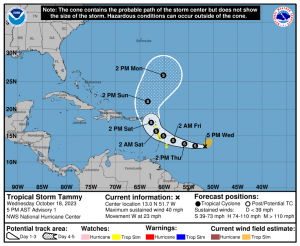A fresh geomagnetic storm headed towards Earth has prompted space weather scientists to issue multiple warnings as the COVID-19 crisis continues to rage around the world in the backdrop. A storm caused by solar winds travelling at a million miles per hour is likely to hit Earth in mid-July, according to sources.
According to Spaceweather.com, the Earth’s outer atmosphere might be heated as a result of solar storms, which could have a direct impact on satellites.
This might cause GPS navigation, cell phone service, and satellite TV to be disrupted. Power lines may carry a lot of electricity, which can explode transformers.
Also Read | Solar storm heading towards Earth may affect GPS, cell phone networks
Media reports stated that a hole has recently opened in the Sun’s atmosphere, resulting in a torrent of charged particles and high-velocity solar winds. The storm, which is caused by a torrent of charged particles from the sun heading towards Earth, is predicted to hit areas of the planet in mid-July.
Experts are concerned that the powerful winds may cause a geomagnetic storm in Earth’s magnetosphere, which encompasses the planet’s highest echelons in space.
The Earth’s magnetosphere may be affected by a mild solar storm, which might result in the appearance of aesthetically appealing auroras in the north and south latitudinous areas.
Millions of tonnes of super-heated gas erupted from the sun’s surface in May of this year, hurtling 90 million miles toward Earth. According to Bloomberg, the explosion, known as a coronal mass ejection, produced the greatest geomagnetic storm in years when it collided with the Earth’s magnetic field.
Also Read | Storm Elsa wrecks havoc across the Caribbean, claims three lives
What is a geomagnetic storm?
Variations in solar winds can cause changes in Earth’s magnetic fields, as well as plasmas and currents in the magnetosphere, according to the National Oceanic and Atmospheric Administration’s Space Weather Prediction Centre in the United States.
As a result of the “efficient exchange of energy,” geomagnetic storms refer to significant or small disruptions in Earth’s magnetosphere from solar winds entering Earth’s space environment.
The National Aeronautics and Space Administration (NASA) estimated that solar winds travel at a speed of one million miles per hour and can travel even faster.
Also Read | Before Yaas, storm batters parts of West Bengal. Watch
According to NASA, the solar winds are currently en route to Earth, travelling at a speed of 1.6 million kilometres per hour, and it’s likely that the speed will pick up.
According to earlier reports, the National Weather Service’s Space Weather Prediction Center, which forecasts ‘space weather,’ anticipated a G-1 class geomagnetic storm forming as a result of fast solar winds in June.
How do they form?
Solar storms are caused by an 11-year cycle in which the polarity of the Sun’s magnetic field alters. During this process, the magnetic forces at work on the sun become tangled and can blast through the surface, sending the sun’s plasma into space and perhaps causing storms on Earth.
Also Read | Storm Elsa moving to Cuba, expected to pass near Florida Keys on Tuesday
Have they happened before?
According to Hydro-Quebec’s website, a solar storm over Quebec in March 1989 triggered a nine-hour power outage across the province.
The 1859 Carrington Event resulted in the most intense geomagnetic storm ever recorded, when telegraph cables electrified, killing operators and setting offices on fire across North America and Europe.







